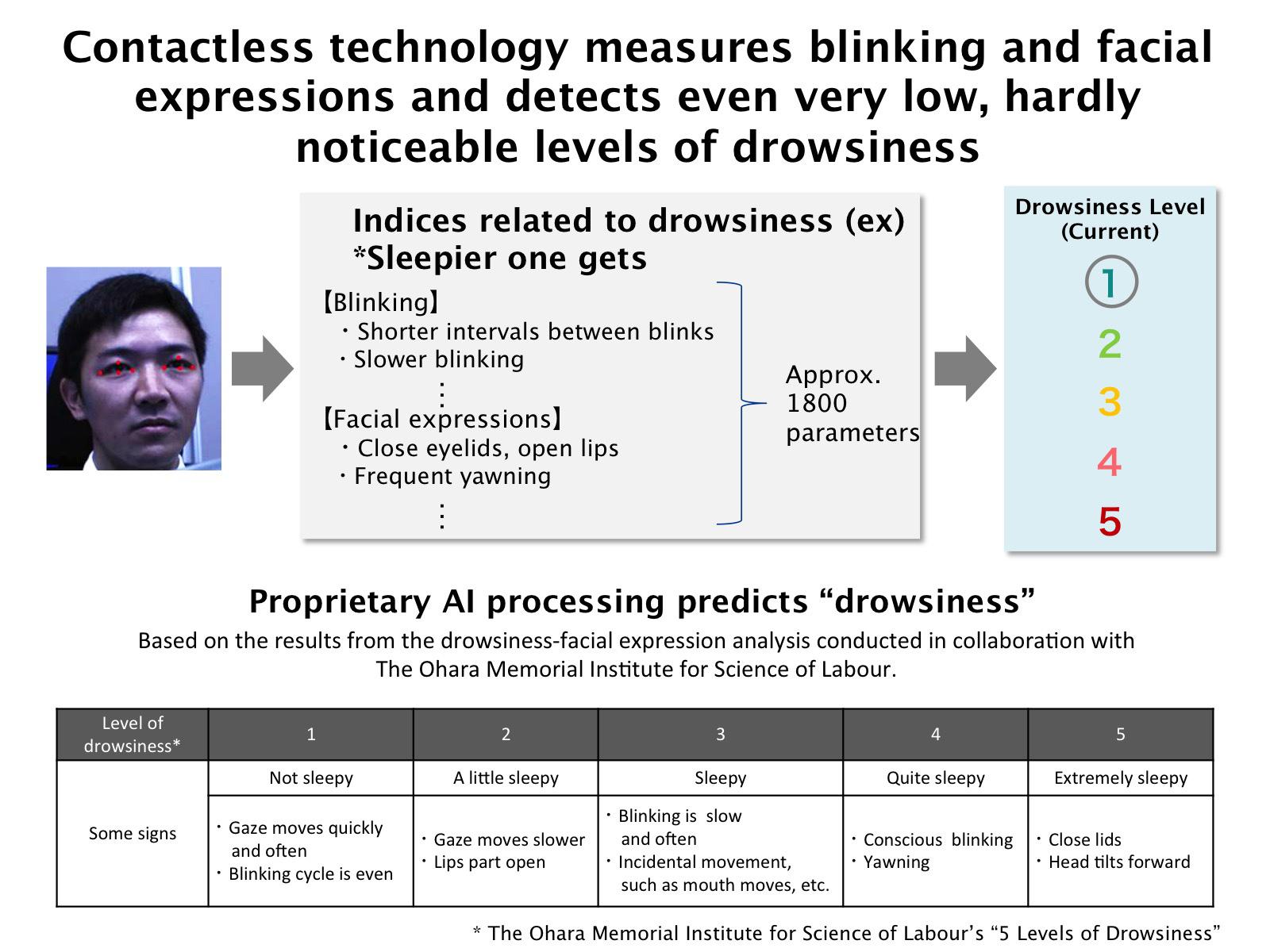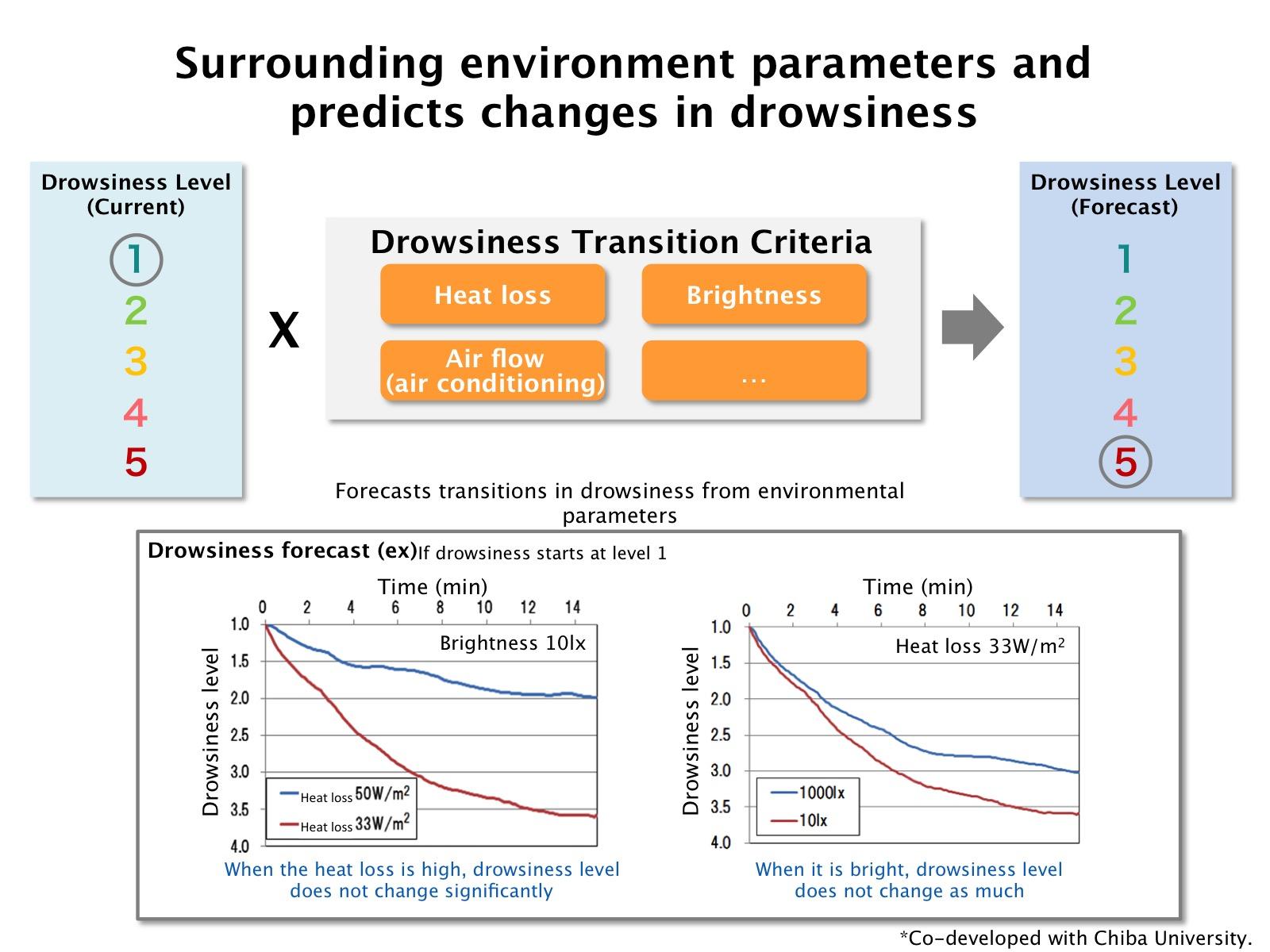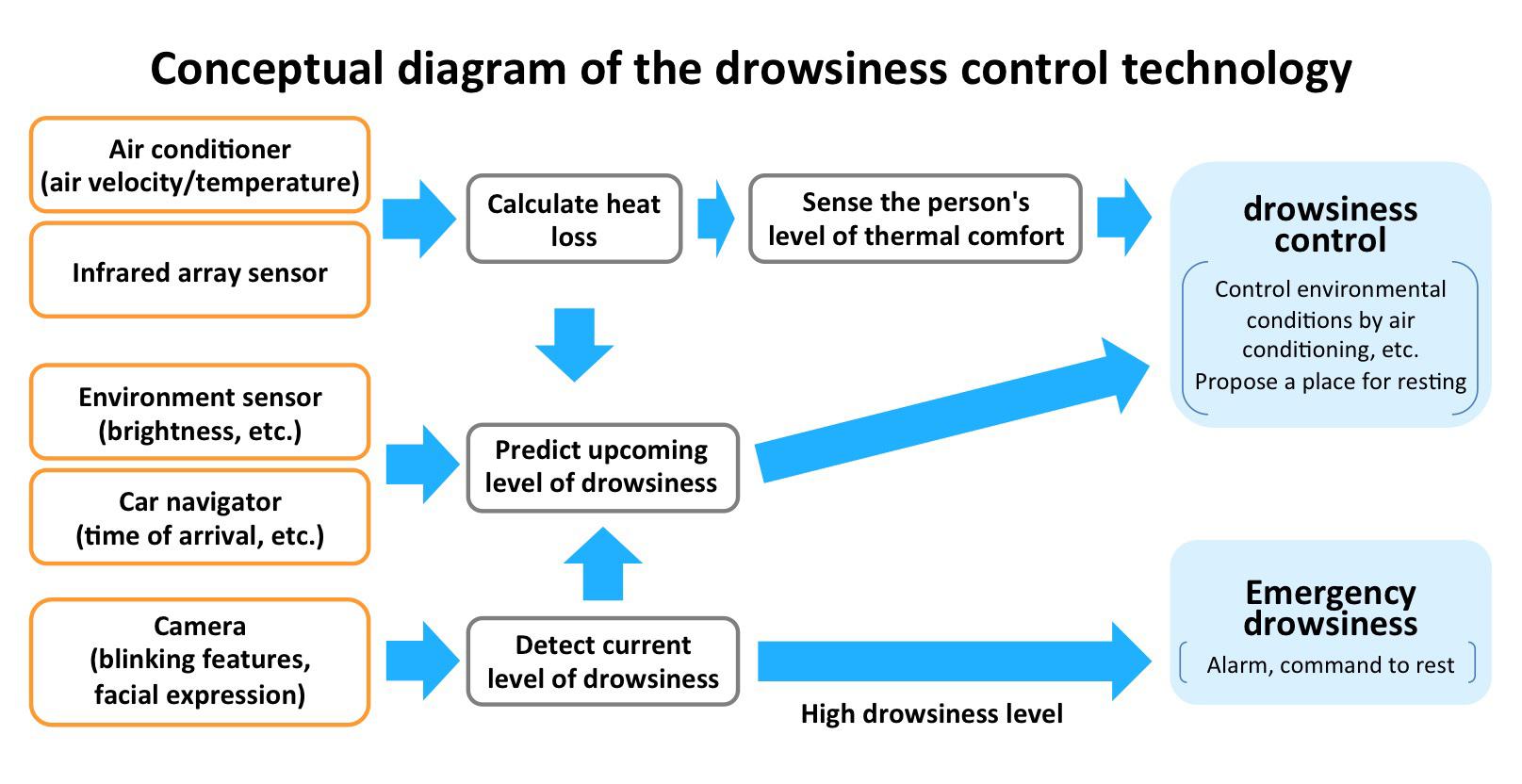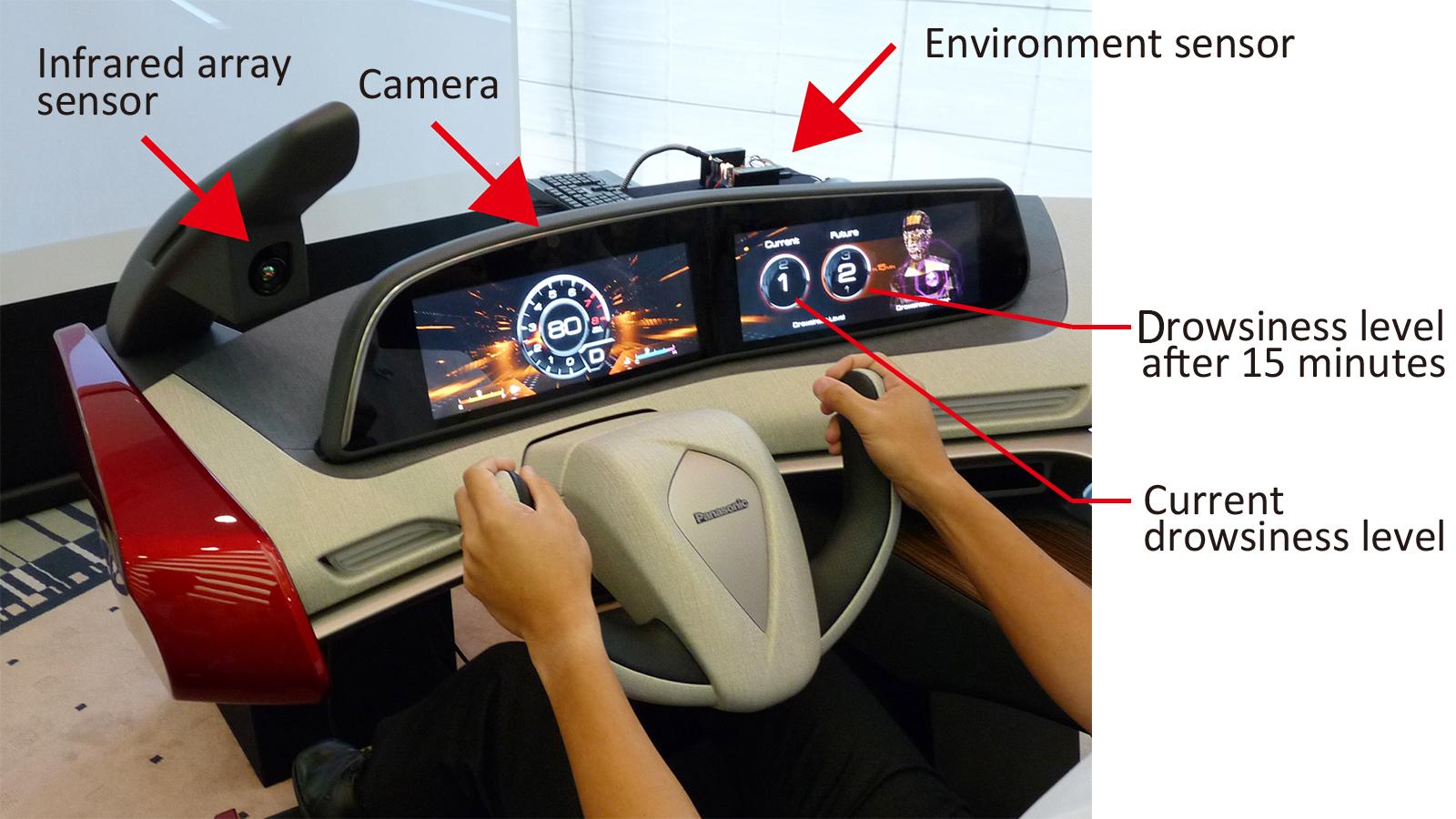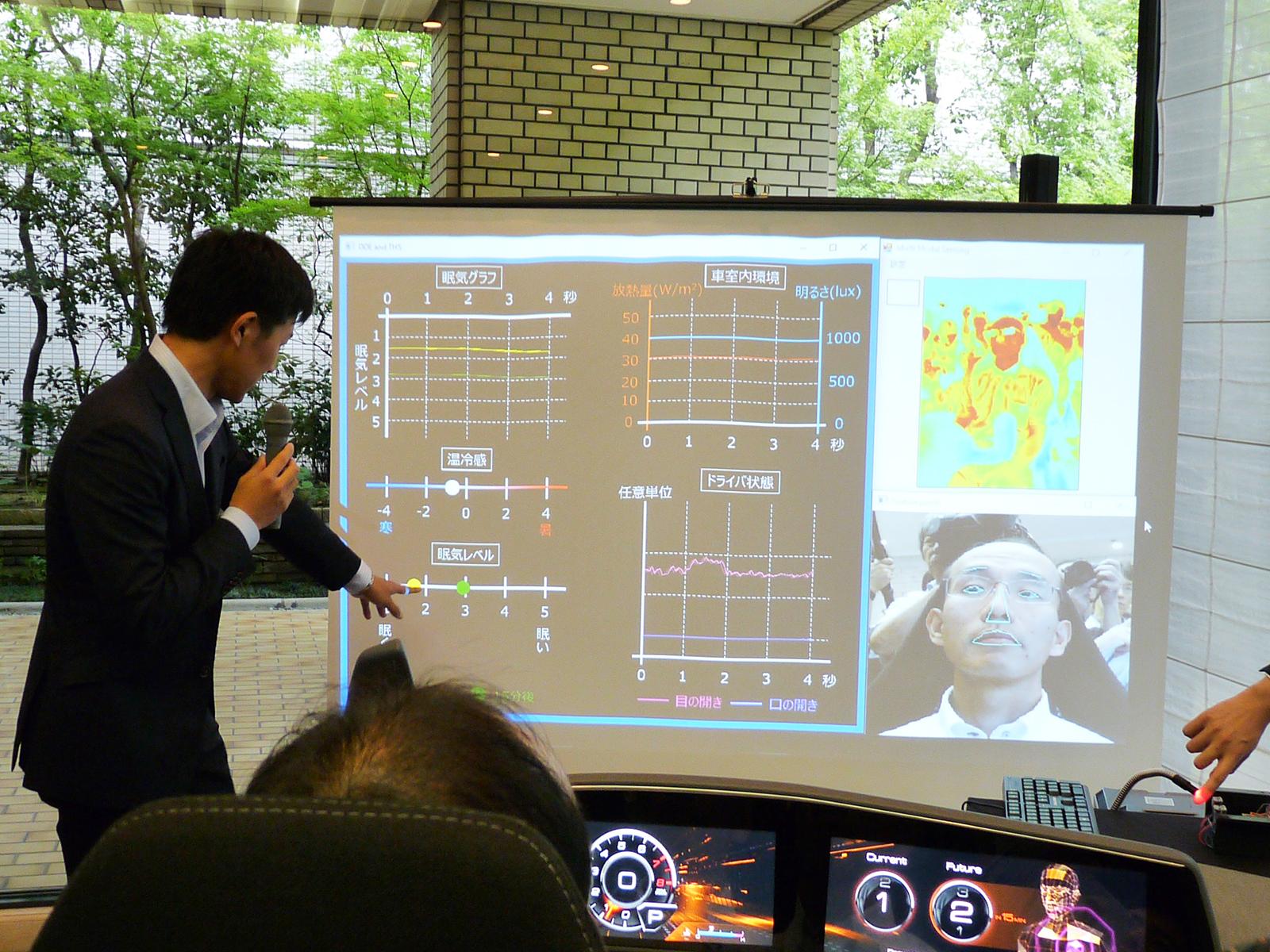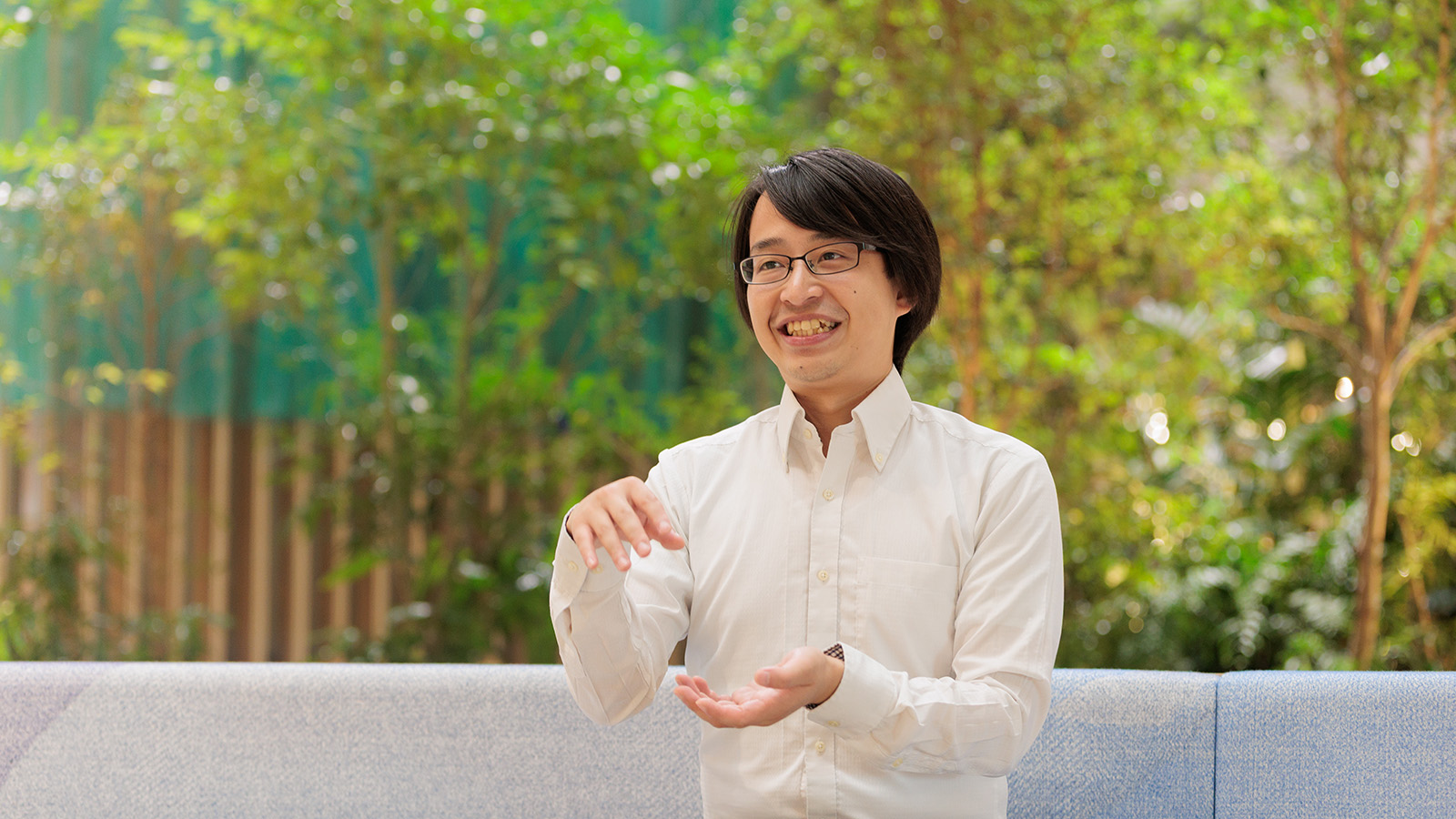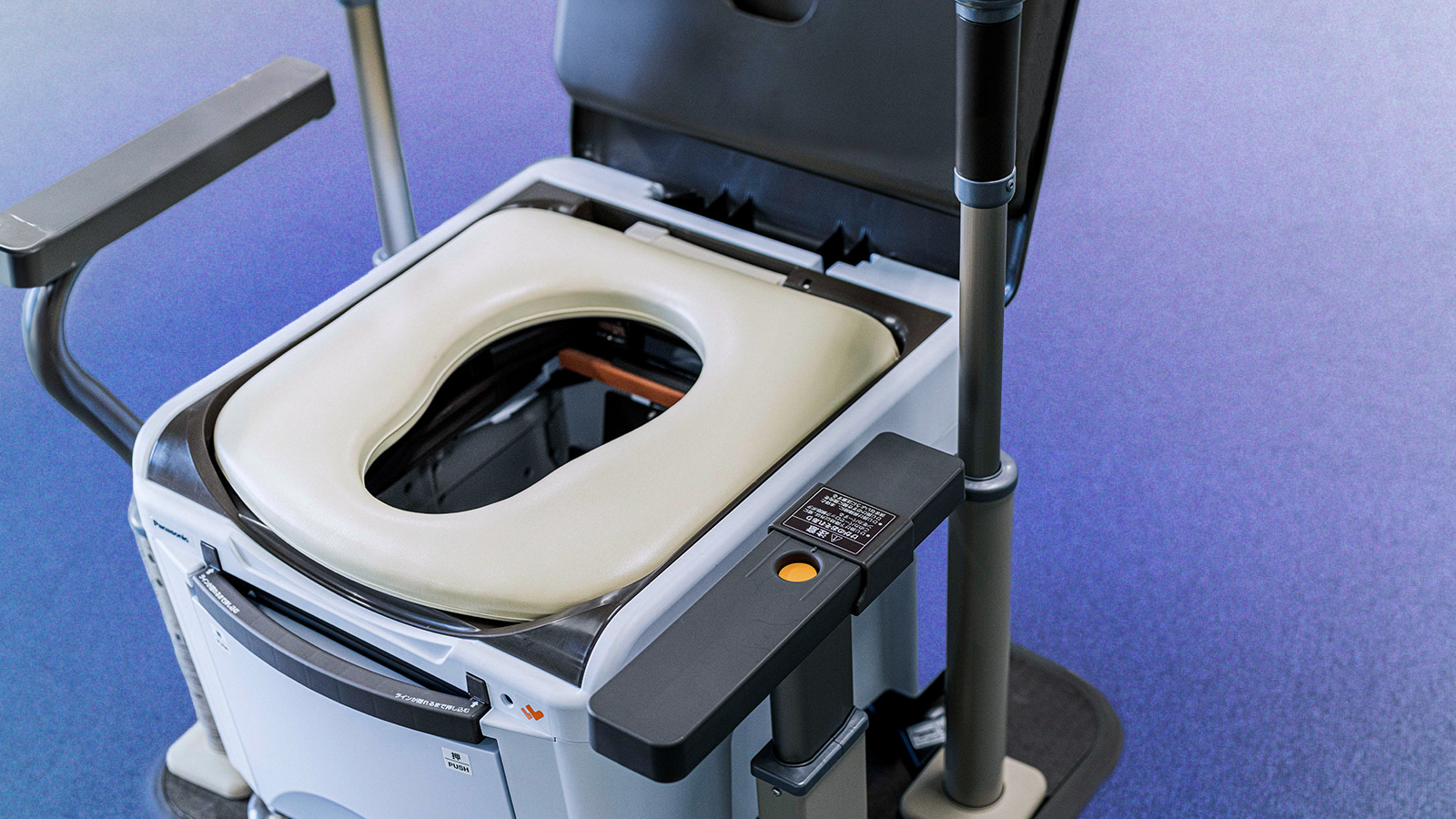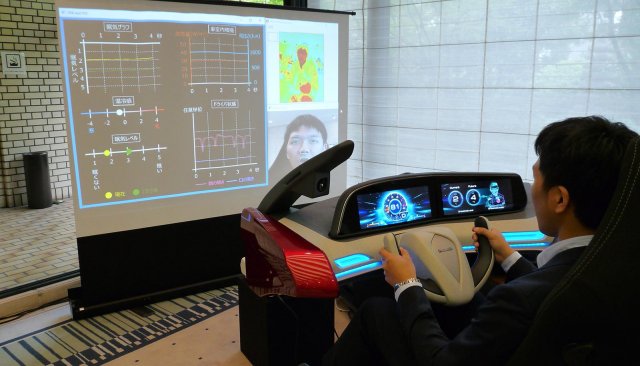
We have all experienced a sudden wave of drowsiness at times when we should be awake and alert like in the office, the classroom, or behind the wheel. Panasonic has developed technologies that detect drowsiness, a physiological phenomenon, using cameras and sensors, then forecast changes in the level of drowsiness, and help control drowsiness with stimuli that does not cause discomfort.
Analyzes 1,800 parameters such as blinking and facial expressions to detect even very low, barely noticeable levels of drowsiness.
In the past, there have been technologies that prevent drowsiness, which required the driver to wear wearable sensors, and provided vibrations and alerts to help keep them awake. But unfortunately, these technologies also tended to be unpleasant for users.
When people feel drowsy, this becomes evident in their facial expressions and eye-blinks. Drawing on the image recognition technology cultivated over the years through the development of surveillance cameras, Panasonic developed new contactless technologies that can accurately detect and measure the level of drowsiness.
Moreover, using a database filled with a wide range of measurement results on drowsiness, blinking, and facial expressions, the technologies analyze approximately 1,800 parameters and their impact on drowsiness from a physiological perspective. Panasonic also developed a proprietary AI, which estimates the level of drowsiness based on the results from the drowsiness-facial expression analysis conducted in collaboration with The Ohara Memorial Institute for Science of Labour. This enables the technologies to detect even very low levels of drowsiness, levels not even noticed by the driver, and to categorize the level of drowsiness.
Takes a reading of the temperature and brightness within the vehicle, and predicts how the level of drowsiness will change.
Generally speaking, it is harder to feel drowsy if the environment is cold and bright, than if it is warm and dark. However, people dress differently. Some people may be dressed light or warm, so it was difficult to estimate how drowsy people can become from the ambient temperature alone.
Working together with Chiba University, Panasonic found that regardless of how people are dressed, in (cold) environments where people are giving off a lot of heat, and in bright environments drowsiness did not progress. Panasonic also developed a contactless technology that uses its proprietary infrared array sensor "Grid-EYE" to measure heat loss. Furthermore, Panasonic also highlighted how the brightness measured by environmental sensors and elapsed time affect drowsiness.
These technologies together help understand the surrounding environment and estimate how the current drowsiness level will change.
Measures thermal sensation and comfort and provides pleasant stimuli that help people stay awake.
Having an idea of how the drowsiness level may change makes it easier to maintain an environment that helps people stay awake by controlling the air conditioning temperature and air flow. Having said that, if the temperature is too low, people will start to feel cold and experience discomfort. Applying the knowledge gained about the thermal environment and physiology through the development of room air conditioners, Panasonic collaborated with Nara Women's University to co-develop a technology that estimates the thermal sensation, which can be used for environments such as inside vehicles where the volume of air flow can have a big impact. The infrared array sensor "Grid-EYE" can keep an eye on the thermal comfort at all times, and this technology can help people stay awake using air conditioning as well as other optimal stimuli.
Demonstration: Helps drivers stay awake with air conditioning, music, volume, etc. when the drowsiness level increases
When the technology was unveiled on July 27, 2017 in Osaka, a demonstration was conducted in a vehicle cockpit mock-up. On the dashboard the "current drowsiness level" of the driver and the forecasted "drowsiness level after 15 minutes" were displayed. When the forecasted drowsiness level became 3 or higher (when the driver is feeling sleepy), the air conditioning got stronger and the volume turned up. And when the drowsiness level became even higher, the audio guidance suggested that the driver take a break, and a parking area nearby was shown on the dashboard.
On the dashboard of the demo cockpit the "current drowsiness level" of the driver and the forecasted "drowsiness level after 15 minutes" were displayed.
The effect ambient conditions such as brightness and temperature have on drowsiness was explained by monitoring the heat loss from the driver's face and body.
Vehicle adoption and applications in the office and field of academia.
Koichi Kusukame, Manager of the Sensing Solution Development Center, Technology Division, Automotive & Industrial Systems Company, Panasonic Corporation, who oversaw the development of these technologies, stated, "I think this is an unparalleled technology. There's nothing out there that can not only detect, but also forecast drowsiness." Moreover, he talked about its potential, "By combining other information, such as how much sleep the user received and the concentration of CO2 in the air, the accuracy of drowsiness detection and prediction can improve even further."
This demonstration focused on the drowsiness of a driver, but the technology can also be implemented in offices and classrooms "to help people stay alert by adjusting the brightness in the room or the temperature of the air conditioning" (Kusukame).
From October 2017, Panasonic will begin offering support to customers who would like to explore the possibilities of sensing technologies. Expectations for Panasonic drowsiness control technology's ability to help keep people awake and alert in offices, classrooms, and in vehicles are rising.
Koichi Kusukame, Manager of the Sensing Solution Development Center, Technology Division, Automotive & Industrial Systems Company, Panasonic Corporation oversaw the development of the drowsiness control technology.
Inquiries about Technologies that Detect, Predict, and Control Drowsiness
Engineering Division, Automotive & Industrial Systems Company
e-mail : drowsiness@ml.jp.panasonic.com
- Disclaimer:
- We would like to note that Panasonic Newsroom is not a place to address personal Customer Service issues. Even though this is not the forum, Panasonic is always eager to resolve your concerns. Our local customer services contacts can be found at Global Support or you can see our list of Social Media Accounts to find the right channel for your queries and concerns.
Related Links
- Emotion and physical condition sensing
- Infrared Array Sensor Grid-EYE
- Panasonic Industrial Devices & Solutions
- Automotive & Industrial Systems Company
- [Press Release] Panasonic Develops Drowsiness-Control Technology by Detecting and Predicting Driver's Level of Drowsiness (Jul 27, 2017)
- [Press Release] Panasonic Starts to Deliver Thermal Sensing Solutions Using the Infrared Array Sensor "Grid-EYE" (Mar 23, 2016)
- The Ohara Memorial Institute for Science of Labour (Japanese)
- Chiba University
- Nara Women's University

